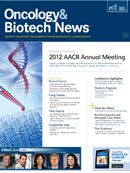Publication
Article
Oncology & Biotech News
Vitamin D Might Benefit Patients With Prostate Cancer
Author(s):
The cancer proliferation marker Ki-67 decreased significantly in men who took high-dose vitamin D in the weeks leading up to radical prostatectomy for localized prostate cancer.
Reinhold Vieth, PhD
The cancer proliferation marker Ki-67 decreased significantly in men who took high-dose vitamin D in the weeks leading up to radical prostatectomy for localized prostate cancer, data from a small clinical study showed.1
The decline in Ki-67 correlated with increasing serum and prostate levels of calcitriol, which rose in a dose-dependent manner with vitamin D, reaching the highest levels with the highest dose of vitamin D (P = .02).
Moreover, high-dose vitamin D was associated with favorable changes in expression of micro- RNA (miRNA) involved in tumor suppression.
“This was early-phase clinical research, essential to justify larger studies that would aim to prove that vitamin D prolongs survival or prevents cancer,” Reinhold Vieth, PhD, a clinical biochemist at the University of Toronto, Ontario, Canada, said during a press conference at the 2012 AACR Annual Meeting.
“We still need to sort out the role of calcium,” he added. “Currently, we predict that high calcium may be adverse to the prostate only if the vitamin D level is low.”
Interest in a possible role for vitamin D in prostate cancer originated with observations of higher prostate cancer mortality among men living in higher latitudes, which have less exposure to ultraviolet (UV) radiation (a principal co-factor in endogenous vitamin D synthesis). The observations gave rise to the hypothesis that UV radiation has a protective effect against prostate cancer via pathways involved in vitamin D synthesis and metabolism.
Vieth’s contributions to the knowledge base included a study of seasonal variation in prostate-specific antigen (PSA) production among men enrolled in a study of active surveillance for early prostate cancer.2 The study showed that PSA levels rose significantly less during the second quarter of the year—spring and summer—compared with the other quarters.
Taking the research a step further, Vieth and colleagues conducted a pilot study of vitamin D therapy in a small group of men who had PSA progression after definitive treatment for prostate cancer.3 Some of the men had declines and stabilization of PSA levels, and the rate of increase slowed in others.
Following the encouraging results from the pilot study, the investigators performed a study involving 66 men scheduled for radical prostatectomy. The men were randomized to one of three doses of cholecalciferol (vitamin D3): 400, 10,000, or 40,000 IU/day, beginning 3 to 8 weeks before surgery. The primary outcomes were changes in Ki-67 and in expression of cancer-related miRNA.
Tissue and serum concentrations of calcitriol increased with the vitamin D dose, reaching the highest levels in men who received 40,000 IU/day. Immunohistochemistry analysis of prostate specimens revealed a significant inverse association between calcitriol levels and the intensity of Ki-67 staining (P = .02) and the proportion of cells with intense staining (P = .008).
“
We still need to sort out the role of calcium. Currently, we predict that high calcium may be adverse to the prostate only if the vitamin D level is low.”
—Reinhold Vieth, PhD
Higher calcitriol levels in prostate tissue correlated significantly with increased expression of miR-100, which is associated with tumor growth inhibition (P = .02). Additionally, the investigators found a trend toward different miRNA expression patterns in malignant versus normal prostate tissue (P = .07).
The vitamin D therapy was safe at the doses evaluated, said Vieth. No patients developed hypercalcemia, hypocalcemia, or serious adverse events. Investigators also observed no adverse changes in plasma phosphate or in renal or liver function.
Despite the favorable findings, the Toronto group does not advocate use of vitamin D doses greater than 4000 IU/day. The high doses used in the study were safe because of the brief time frame prior to surgery.
References
- Wagner D, Nonn L, Antonio A, et al. Double-blind randomized clinical trial of vitamin D3 showing effects on tissue calcitriol levels, gene expression and proliferation immunohistochemistry in prostate cancer. Presented at the American Association for Cancer Research Annual Meeting; March 31-April 4, 2012; Chicago, IL. Abstract LB-435.
- Vieth R, Choo R, Deboer L, et al. Rise in prostate-specific antigen in men with untreated low-grade prostate cancer is slower during spring-summer. Am J Ther. 2006;13:394-399.
- Woo TC, Choo R, Jamieson M, Chander S, Vieth R. Pilot study: potential role of vitamin D (Cholecalciferol) in patients with PSA relapse after definitive therapy. Nutr Cancer. 2005;51(1):32-36.










